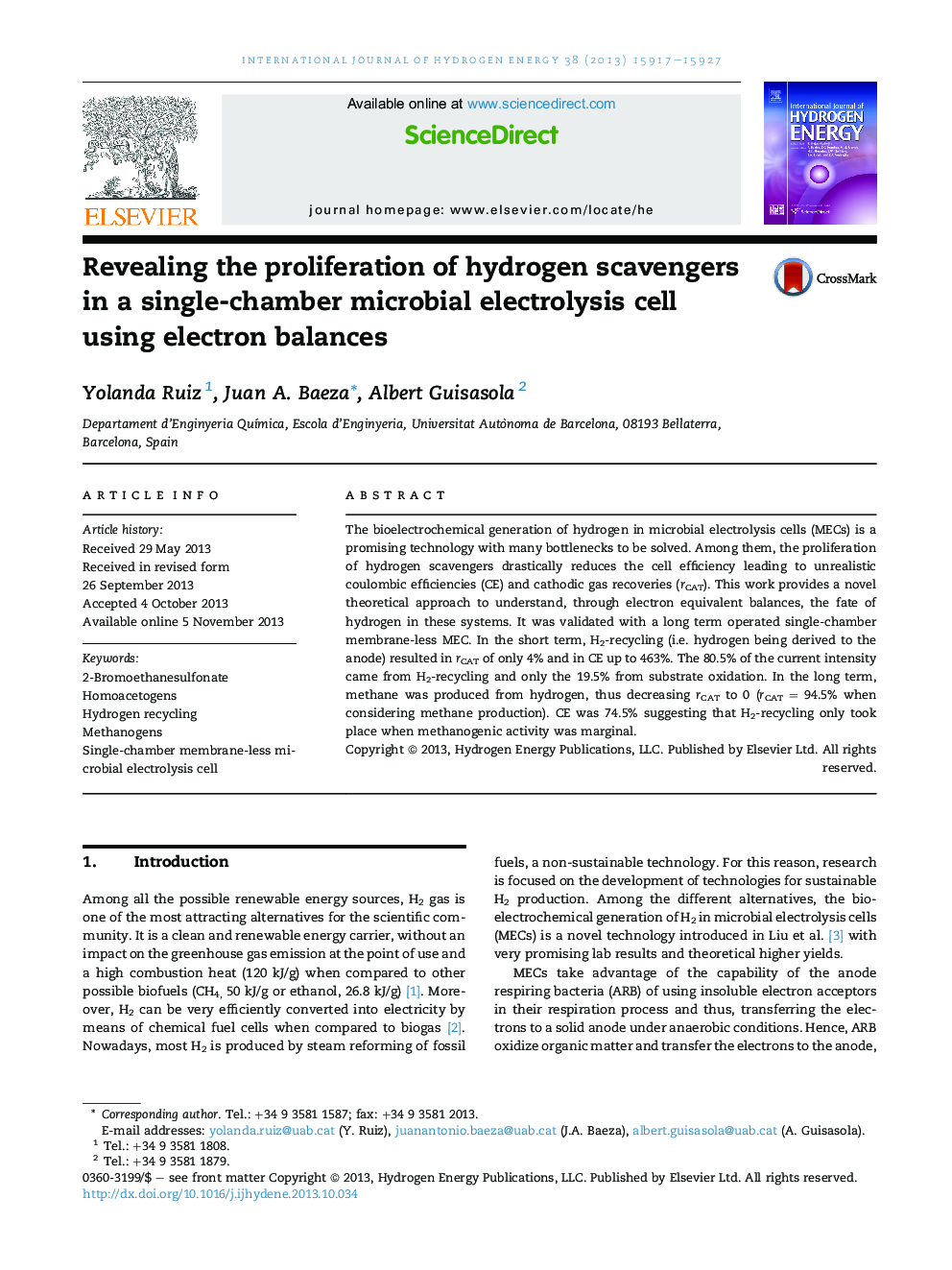| کد مقاله | کد نشریه | سال انتشار | مقاله انگلیسی | نسخه تمام متن |
|---|---|---|---|---|
| 1274151 | 1497509 | 2013 | 11 صفحه PDF | دانلود رایگان |

• The role of H2 scavengers in the bioelectrochemical H2 production is quantified.
• CE and rCAT to estimate MEC performance are not valid under H2 consumption.
• Electron equivalent balances help to understand the H2 fate in single-chamber MEC.
• Our approach was experimentally validated with H2-recycling and methanogenesis.
The bioelectrochemical generation of hydrogen in microbial electrolysis cells (MECs) is a promising technology with many bottlenecks to be solved. Among them, the proliferation of hydrogen scavengers drastically reduces the cell efficiency leading to unrealistic coulombic efficiencies (CE) and cathodic gas recoveries (rCAT). This work provides a novel theoretical approach to understand, through electron equivalent balances, the fate of hydrogen in these systems. It was validated with a long term operated single-chamber membrane-less MEC. In the short term, H2-recycling (i.e. hydrogen being derived to the anode) resulted in rCAT of only 4% and in CE up to 463%. The 80.5% of the current intensity came from H2-recycling and only the 19.5% from substrate oxidation. In the long term, methane was produced from hydrogen, thus decreasing rCAT to 0 (rCAT = 94.5% when considering methane production). CE was 74.5% suggesting that H2-recycling only took place when methanogenic activity was marginal.
Journal: International Journal of Hydrogen Energy - Volume 38, Issue 36, 13 December 2013, Pages 15917–15927